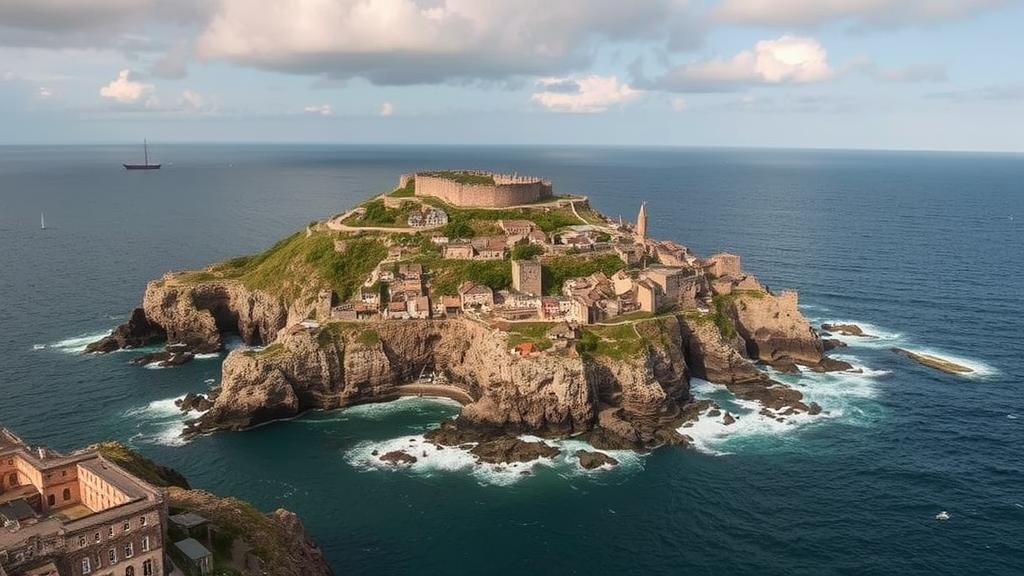Exploring the lost city of Ys, said to be swallowed by the sea off Brittany’s coast.
Exploring the Lost City of Ys
The legend of the lost city of Ys, said to be swallowed by the sea off the coast of Brittany, France, captivates the imagination of many. Known for its tragic beauty and rich history, the story intertwines myth and reality, creating a fascinating tapestry of folklore and archaeological interest. The city is said to have been built on the coast by King Gradlon and was a marvel of civilization, only to be claimed by the ocean due to the sins of its inhabitants.
Historical Background
Ys is steeped in myth, with its origins traceable to early medieval Brittany where it appears in the writings of various poets and historians. earliest mentions date back to the 6th century, with accounts found in text fragments from the Breton tales. The most comprehensive account is in the 12th-century Life of Saint Winwaloe, written by the monk Folcuin, which describes how the city fell into the sea due to its moral decay.
According to local lore, the city of Ys was a marvel of engineering, boasting grand palaces and intricate canals. It was said to be protected by a dike built by King Gradlon, who prohibited any immoral activity to preserve its beauty. But, the citys eventual downfall came through the disobedience of a temptress named Dahut, who unlocked the gates of the dike one stormy night, leading to the disastrous flooding.
Archaeological Evidence and Theories
While the existence of Ys remains a product of legend, various archaeological discoveries in the region have sparked debates about its potential historical basis. The area near the coastal town of Douarnenez and the Bay of Biscay has yielded evidence of ancient settlement patterns that suggest sophisticated communities once thrived there.
- In the 1960s, underwater archaeology teams discovered remnants of ancient structures that some theories speculate could link to Ys.
- Natural sediment deposits in the Douarnenez bay have revealed artifacts dating back to the early medieval period, showcasing tools and pottery consistent with early Breton culture.
Although no definitive evidence of Ys exists, researchers suggest that traditional flooding events in the region could have inspired the legend. The tides in this area are notably extreme, sometimes rising and falling up to 15 meters, reminiscent of the mythological flood attributed to Ys.
The Cultural Significance of Ys
The legend of Ys has transcended its original narrative, influencing art, literature, and popular culture. It has inspired numerous works, including the operas, novels, and films, reflecting different interpretations of the myth.
- The late composer Paul Le Flem wrote an opera named Ys that premiered in 1929, highlighting the storys tragic elements.
- Contemporary works, such as the animated film The Legend of the Lost City of Ys, continue to explore its themes of love, betrayal, and redemption.
The story of Ys has also influenced Breton identity, where regional pride in the myth connects residents to their heritage. Festivals celebrating maritime culture often feature the legend, showcasing traditional music and storytelling that keep the tale alive.
Real-World Applications and Lessons
Exploring the legend of Ys extends beyond myth into practical applications in literature, art, and environmental awareness. The story serves as a metaphor for the potential consequences of moral decay and human actions on nature, echoing contemporary themes such as climate change and urbanization.
From a cultural perspective, the tale exemplifies the importance of preserving local folklore and history. It underscores how myths can shape societal values and community identity, encouraging modern societies to recognize and celebrate their unique narratives.
Conclusion
The lost city of Ys remains a poignant symbol of history, morality, and the seas overwhelming power. While it may reside firmly within the realm of mythology, its influence is tangible, inspiring exploration into the depths of both the ocean and human creativity. Engaging with such legends encourages a dialogue between the past and present, inviting everyone to ponder what truths lie beneath the surface.
In summary, whether as a cautionary tale or an artistic muse, the saga of Ys invites exploration and reflection, reminding us of the thin line between civilization and nature, and the stories that define us.



